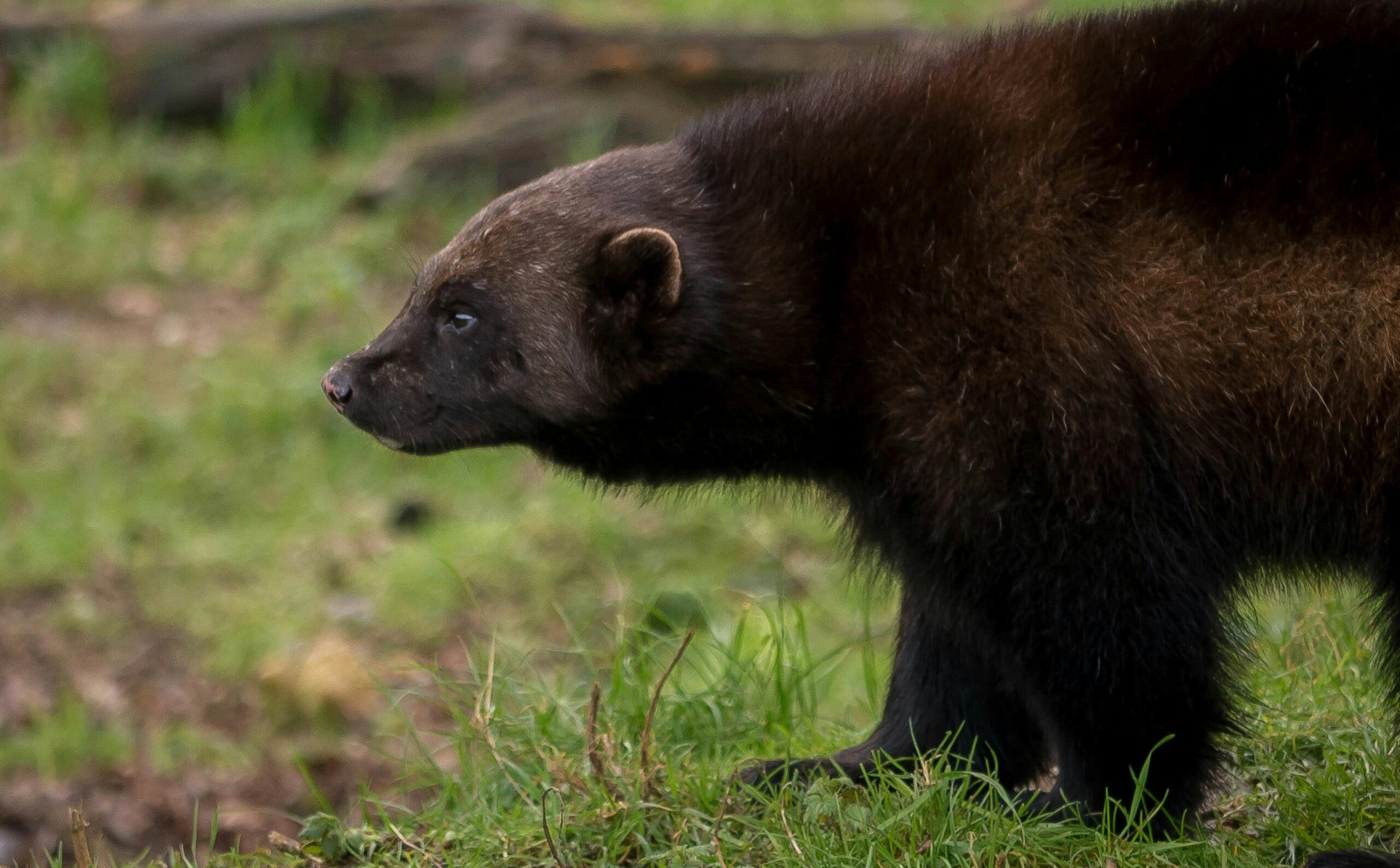Wolverines in Oregon are elusive creatures that look like small bears but belong to the weasel family. They can weigh around 20 to 40 pounds and have thick fur, strong jaws, and sharp claws. They thrive in cold places with deep snow. Their strong bodies allow them to scale steep terrain and cover long distances, helping them locate decaying animals and small prey.
Since 1975, these animals have been considered threatened in Oregon due to habitat loss and overhunting. These animals are scarce in the state, so spotting one is rare. Biologists see each sighting as a chance to learn how wolverines move and where they might still find suitable conditions. For those who care about wildlife, the presence of wolverines in Oregon shows the importance of protecting high-elevation areas and winter snowpacks.
Wolverines in Oregon: Habitat and Distribution
Wolverines favor alpine environments with persistent snowpack. They raise their young, called kits, in dens dug under thick snow. This shelter keeps them safe from predators and harsh weather. In Oregon, these conditions exist in the Wallowa Mountains, parts of the Cascade Range, and other high-elevation zones. Forest openings in these areas give them room to hunt small mammals and scavenge on carcasses left by other predators.
Historically, reports placed them in the Steens Mountains of Harney County and the Wallowas in northeastern Oregon. Recent accounts have put them near Three-Fingered Jack in Linn County and Broken Top Mountain in Deschutes County. Most of these sightings happen in the eastern part of the state. However, recent sightings in western Oregon give fresh insight into how far wolverines can travel.
Recent Wolverine Sightings and Significance
In March 2023, a visitor saw a wolverine near Portland. That was the first confirmed report in western Oregon in more than 30 years and was tracked by the Oregon Department of Fish and Wildlife (ODFW). Wildlife experts took notice because it showed that wolverines can cross rivers and navigate lower-elevation terrain. This sighting changed how some biologists view their range, suggesting that they might appear in places no one expected.
In April 2024, another sighting made headlines in Eugene, as reported by KLCC. Some observers thought it might be the same animal seen near the coast a few weeks earlier. These back-to-back sightings revealed how wolverines can wander between remote mountains and semi-urban landscapes. Every new observation helps managers measure the animal’s resilience and informs future conservation plans.
Conservation Status and Efforts
Wolverines have faced many threats in the past century. Their need for long-lasting snowfields makes them sensitive to shifts in climate. Reduced snowpack can limit safe denning sites and force wolverines to search for other areas, which fragments their population. Habitat loss also poses problems, since roads and development divide the mountains into patches.
Groups like ODFW partner with local organizations to track wolverine movements and preserve key winter territories. They also encourage private landowners to keep alpine zones intact. Some projects work to restore forest edges and maintain travel corridors connecting separate wolverine populations. These steps aim to slow the decline of wolverines in Oregon and give them space to recover.
Guidelines for Residents and Outdoor Enthusiasts
People who spend time in wolverine habitats can help by following a few simple steps. Hikers and campers should store food in tightly sealed containers and keep campsites free from scraps. They should also pay attention to their surroundings, since wolverines might appear in places where they search for leftover meat. Leaving no trace in the backcountry helps wild animals stay out of human areas.
It is recommended that homeowners in alpine regions keep garbage in sturdy containers, away from sheds and porches. Removing old food and covering compost piles lowers the chance of attracting scavengers like wolverines. Those who see a wolverine in any part of Oregon can report it to the state wildlife agency. That information gives biologists new data on distribution and movement.
- Store food in sealed bins and keep cooking areas clean.
- Dispose of scraps so they do not attract wildlife.
- Watch for paw prints or other signs, such as tracks in snow.
- Contact ODFW to share sightings or photos.
How Whitney Land Company Supports Conservation
Whitney Land Company works with clients to find properties that fit well with Oregon’s natural heritage. We focus on regions that balance human use and wildlife protection, including areas where wolverines might roam. This thoughtful approach helps keep fragile habitats intact. It also supports landowners who value the state’s unique animals and want to limit harm to sensitive species.
Those who look for property in the Wallowas, Steens Mountains, or near the Cascades often consult Whitney Land Company for advice on habitat management. They learn about zoning rules that affect wolverine territory and receive tips on seasonal use of high-country lands. This guidance lets buyers choose places that benefit local wildlife while meeting their own needs. By promoting these values, Whitney Land Company helps sustain the future of wolverines in Oregon.


